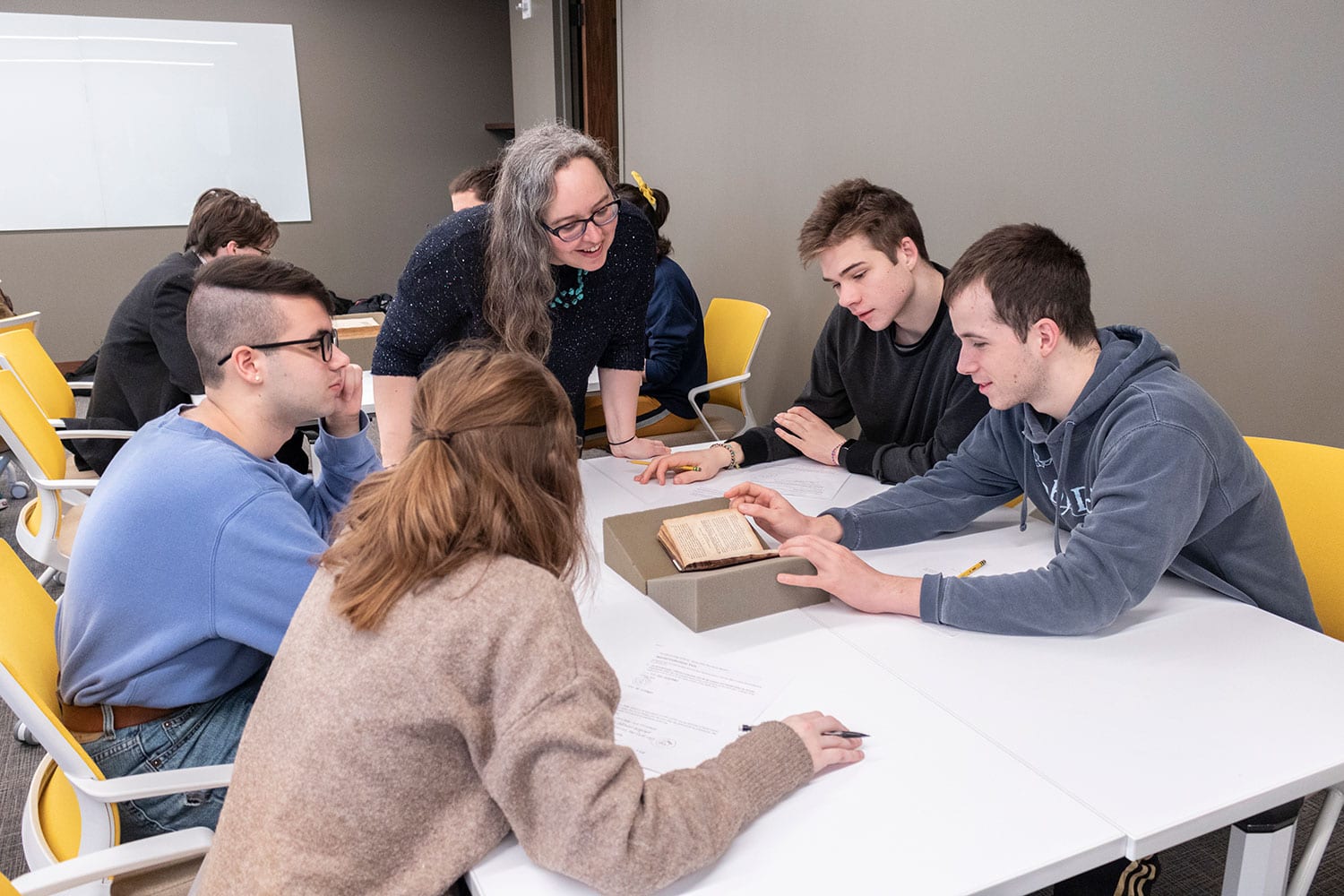Course Title: “Humanimals in Spanish Literature and Culture from Prehistory to the Early Colonial Period”
Taught By: Assistant Professor of Spanish Luis Rodriguez-Rincon
Says Rodriguez-Rincon:
In this course, we explore, from a specifically Iberian perspective, the different ways humans have defined themselves in relation to animals in literary texts, cultural artifacts, and early philosophy, and, vice versa, how animals have been defined in relation to humans. While there is much to be said about animals in contemporary Spain, let alone Latin America, my course takes a historical perspective on understanding animals as living and literary beings with a focus on the medieval and early modern periods and their antecedents.
To give an idea of the historical range of material covered, my course starts with the animal forms that appear in the cave paintings of Altamira completed over 30,000 years ago in the north of Spain. In later weeks, we read the philosophy of Aristotle, whose famous treatises on animals were brought to Spain in the medieval period and translated from Arabic to Latin in the 13th century before becoming widely known in Christian Europe. Currently, we just finished a discussion of a collection of animal fables called Calila e Dimna, which was originally written in Sanskrit before making its way from India to Spain by way of 8th-century Baghdad. Calila e Dimna was translated from Arabic to Castillian in 1252 and is considered today the first work of Spanish narrative prose and, thus, a crucial point of departure for the literary history of the language.

In terms of theoretical questions and themes, the course probes the idea of a human-animal divide and traces the changing limits of that divide across Ibierian literary and cultural history. What does it mean to be an animal and how does that relate to a person being called a beast? In Spanish, to call someone a bestia is to insult them and question either their education, morality, or cultural knowledge. What does it mean that our definition of the human overlaps with the terms we use to discuss animals? Those are just some of the questions that emerge from probing the human-animal species barrier.
Furthermore, we discuss quite a bit the potential and limitations of anthropomorphism in the representation of animals. Take for example the fables of Aesop, where animals talk and think like humans. On the one hand, anthropomorphism is what makes animal characters relatable to humans and what permits them to serve as literary characters. On the other hand, anthropomorphism ensures that animal characters always resemble humans, a process that erases a great deal of an animal’s natural character (i.e., their habits and mode of being in the wild). There are those who find a third way of understanding anthropomorphism as a way of generating human sympathy and appreciation for animals. Along these lines, anthropomorphism could be one strategy worth pursuing by literary writers and artists in the face of mass species extinction and human indifference to the suffering of the animal world. Can anthropomorphism make people care more about animals? That is a question I think worth asking in relation to the literature and culture of ancient times.

There are several reasons why I wanted to teach this course on “humanimals” now. Like so many, I witness the horrendous impact of human-induced climate change and habitat destruction on animal populations across the globe, and I feel both sadness and shame. Shame at the cruelty and idiocy of my own species towards the rest of the living world. Insisting on talking about animals and their plight in the anthropocene at Haverford is my small contribution to that struggle. Furthermore, the course is also inspired by the advent of a legal discourse around animal rights and personhood that has swept the world. In Spain, they recently amended their laws so that animals are legally deemed sentient beings with rights comparable to humans and not just objects at the mercy of humans. What happened in Spain is part of a growing legal movement to recognize the legal personhood of not just animals but rivers and whole ecosystems as well across the globe.
Learn more about courses offered by the Department of Comparative Literature and the Department of Spanish.

